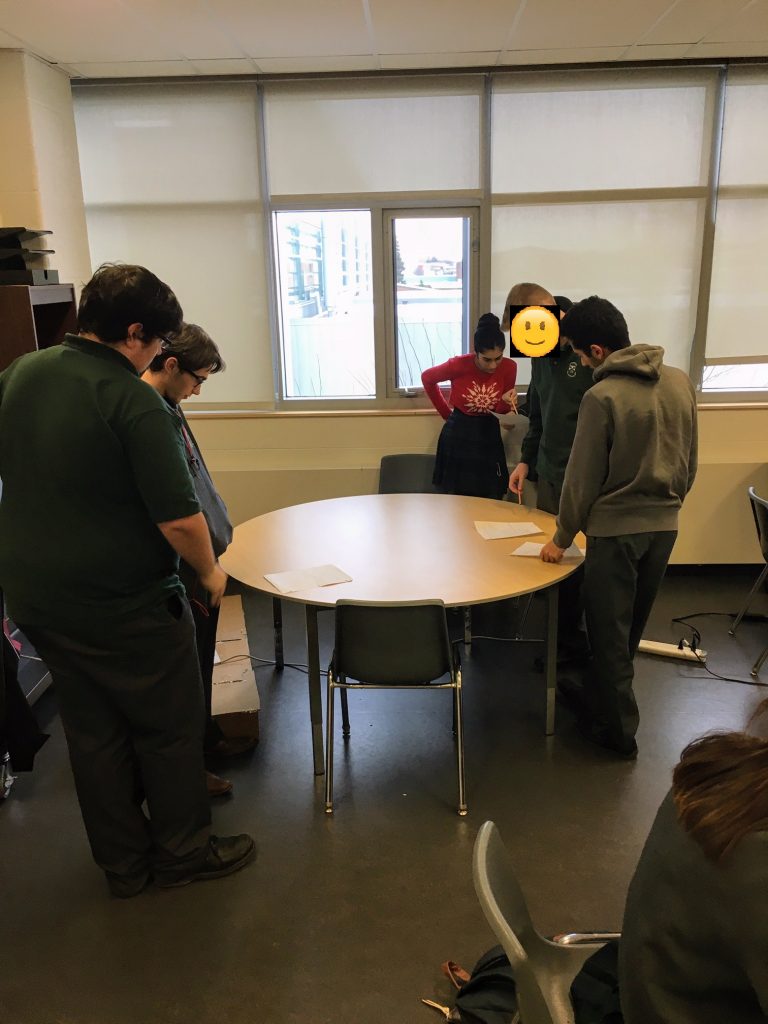Here are the rules:
You may only get help in the “I Need Help Zone” (located at the back of the classroom). Only one sheet of paper is allowed during this meeting.
Example Scenario: Jimmy asks Julie to meet him in the “I Need Help Zone”. Jimmy brings his paper only (no writing utensils) and Julie brings NOTHING. Jimmy asks his questions and Julie does her best to help him using only her words.
I tried this new strategy in my calculus class while they were working on their Smarties Project. It was an open-book in-class assignment where students could only get assistance from their notes or from a peer in the “I Need Help Zone”.
I’m happy to report that it was a major success! At first, students were a little embarrassed (no one wanted to be the first person to need help), but that faded quickly. I’d say there was almost no time during the period that some students weren’t using the zone.
I love how this worked out and I’m hoping to use it again soon. Obviously there is a benefit for the student receiving the help, but there is also a huge one for the student giving it as well. Having to look at someone else’s work and diagnose what’s wrong, why, and what to do next, using only words, is a massive critical thinking exercise that, in my opinion, students need to experience more of.
Has anyone else tried something similar to this? I’m thinking my next step is to use this strategy during a flipped unit when students are using class time to complete assigned problems.
(Image courtesy of https://ronniemcbrayer.org/2015/09/21/more-than-we-can-bear/)



Hi Michael,
Great idea! This strategy really turned your students into a community of learners who can recognize that they all have times that they can teach and times that they need help.
I have a primary (so not applicable in your context – sorry) example from my classroom teaching days. When I was teaching small reading groups, I had all sorts of systems in place that were originally designed to stop the students from interrupting me but in the end had many other great learning outcomes. The system I used that reminded me of your, “I need help zone”, was one where students could write their questions on sticky notes or the board, and then they had to wait until I was finished with my reading group. What I had originally devised as a way to cut down on interruptions soon transformed my classroom from a place where only I had the answers, to a place where the students could answer each other’s questions. Happily, students soon started directing most of their questions to their peers first and we kept the Question Board operating during other times of the school day. It really did have a transformation effect on the overall dynamics of our community; underscoring the idea that we are al teachers and we are all learners!
Michael- I think your restriction-only one piece of paper- is interesting and definitely shifts the focus to verbal communication-which likely was your goal? (Aren’t numbers the language of math? 🙂 )
Great way to get passed the (shaming?) idea of ‘needing help’ or ‘asking for help’, yet, isn’t this exactly one of the skills we try to develop in our learners. From a young age, learning to identify your needs and ask for help is a quality we aim to nurture. We need our students to see that seeking assistance is an act of courage. Not to mention the wonderful learning opportunity for the ‘helper’ to consolidate knowledge and develop social / emotional intelligence.